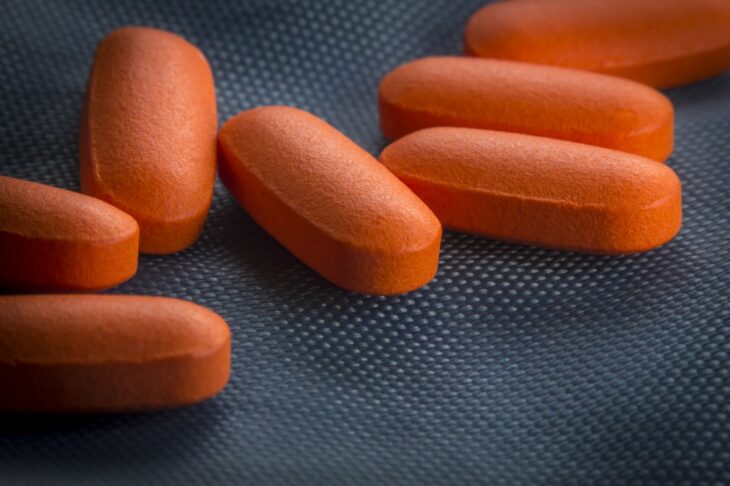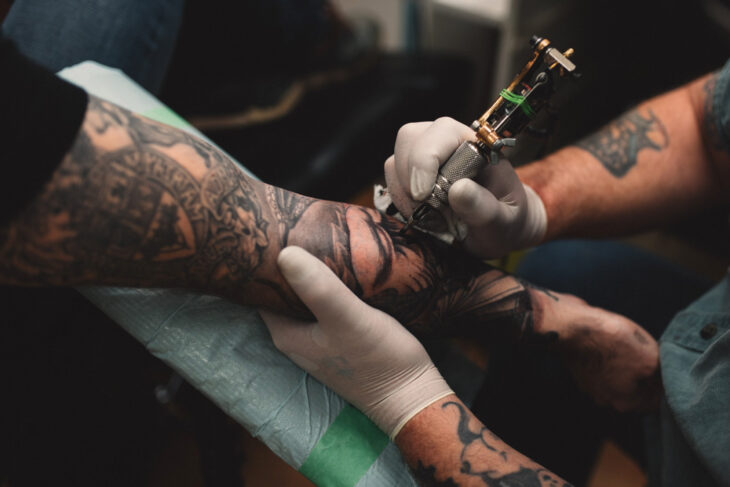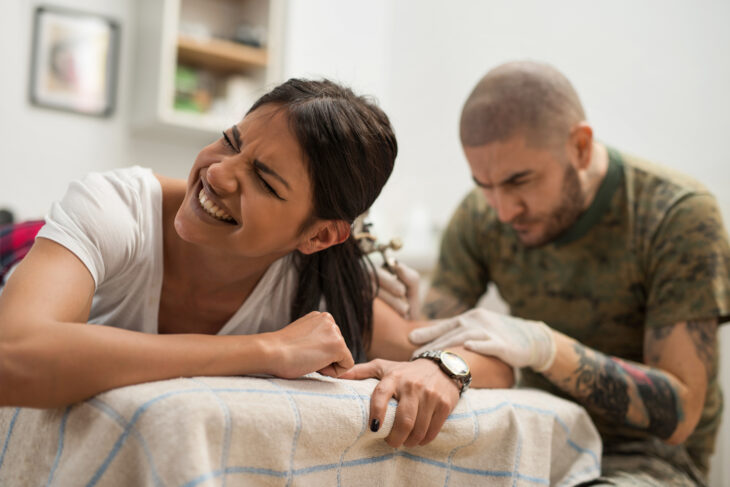The pain threshold is different for everyone. Often, pain is the only thing stopping a person from getting a tattoo. Thus sometimes clients ask about anesthesia. There are various anesthetic medications available today. We will talk about how effective they are, how they affect the tattoo and how tattoo artists treat them in this piece.
Contents
Does it hurt or not?
There is no definite answer to this question. It depends on a person’s pain threshold. While some people find the process of tattooing to be the worst pain in the world, for others it’s just a slight tingling sensation.
According to the Inkedway the needle does not go very deep under the skin. It manages to make up to 15 punctures in a second. Speed is very important in this case because when the needle moves faster, it begins to cut the skin. We have three layers of skin: epidermis, dermis, subcutaneous tissue. The epidermis tends to constantly renew itself, so the needle with the ink must get into the dermis in order for the tattoo to become permanent.
The pain level also depends on the place on the body, process duration, and the tattooist’s skill.
Types of painkillers and their effects

img source: cloudfront.net
Medical drugs used for local anesthesia come in a wide range of products. Some prove to be qualitative and block sensations completely, while others are famous for various negative experiences, such as inflaming the skin and excessive changes in its structure. Besides, different drugs work differently on each body. It depends on the skin condition, skin type, body reactions, compatibility with these or those chemical components. The result is that everyone feels different and it is difficult to predict the effect.
Drug action also varies. The time of effects can last from 20 minutes to 2 hours, depending on the drug and its absorption by the body.
It happens that the anesthesia comes out before the end of the procedure. There is no way to predict the period of effect, so artists have to apply additional medication to open scratches. This further stresses the skin and causes various reactions. If you have an excessively sensitive organism, you should not use this kind of treatment. Even if you want to use anesthesia, do it only before tattooing.
Anesthetics can be supplied in different forms:
- Ointments
- Creams
- Gels
- Sprays
- Foams
The method of use is specified in the instructions. The usual method is to apply the substance to the skin area where the tattoo will be inked, cover the place with a film, wait for the specified time and then proceed to work.
Remember that a painkiller does not necessarily completely block the pain, sometimes it only mutes the sensation. Also, the pain-blocking gradually decreases when the effect of the drug is released. So the opinion that the use of anesthetics completely removes pain is a myth. There are many medications available, but using some of them for tattooing can lead to unpredictable reactions and undesirable results.
Why tattooists prefer to work without painkillers?

img source: metro.co.uk
There is also a rumor that artists are more comfortable working when anesthetized. The reason for this is that the medication causes the capillaries to shrink and there is less discharge during the procedure. This is far from being true. Perhaps some tattoo artists do feel more comfortable working this way. But professionals prefer to tattoo the skin that is not chemically exposed.
Here are the main reasons of such a choice:
- The skin becomes harder. The harder skin makes it difficult to control the needle, to inject the ink and, as a result, the skin becomes less colored.
- The dermis becomes woody. Because the ink is placed in the dermis underneath the epidermis layer when the tattoo is inked, the ink only partially enters the dermis in the curing state and remains predominantly at the top.
- The ink goes away over time. The pigment accumulates to a greater extent only in the epidermis, which is regularly renewed. Within a week, the skin is renewed, the pattern from the top layer goes away, and the part of the pigment comes out from the dermis as well. There was not much pigment in the dermis, so the tattoo becomes faded and uneven.
- Substances can react. Some drugs react unpredictably when in contact with the ink, reducing its density.
- Inflamed skin heals worse and complications appear. Healing after the anesthesia comes out is different. Various sensations may occur with the medications’ exit such as malaise caused by the abrupt activation of the traumatized skin area in the brain’s perception. When the intervention in the skin is gradual, it is better perceived by the human brain. Also, some people may be allergic to substances..
To sum up, tattoos with painkillers are increased stress on the body and negative effects on the tattoo.
How to make the process less painful

img source: ltkcdn.net
However, it is not as terrible as it seems at first. The process of getting a tattoo can become more comfortable if you follow these tips:
- Eat something an hour before the session
- Drinking water before and during the process will eliminate dehydration
- Think over the clothes you are going to wear for the session, it should be comfortable, so that the artist could easily get to the area of the body where the drawing will be done
- If the seance is scheduled for the morning, get a good night’s sleep and postpone parties until the morning to another day
- You can stock up on lollipops to help distract you and keep your energy levels up
- Take a shower before going to the tattoo salon, but do not be fond of perfume
- The day before the process, you must not drink alcohol, as it makes the blood thinner and affects its clotting
- You can only drink one cup of coffee on the day of the tattoo session
- Be sure that the artist’s workplace and instruments are sterile
- Postpone the seance, if you have a cold
- It is not recommended for women to get a tattoo during menstruation
- Do not take with you a lot of people for support, one person will be quite enough because other people can distract or simply irritate the artist
- Do not concentrate on the pain, it passes very quickly
- If you can no longer stand the pain, ask the tattoo artist to stop the seance.
The pain begins during the procedure because of the penetration of the ink into the skin. After the procedure, the intense pain should go away, but unpleasant feelings may still be present for a few days. If the pain has not eased after a week and the tattooed area is red, contact your doctor. Make sure that it is not an allergic reaction or infection. If necessary, take appropriate measures immediately.
And do not forget the most important thing that after the tattooing, you need special care for it.
